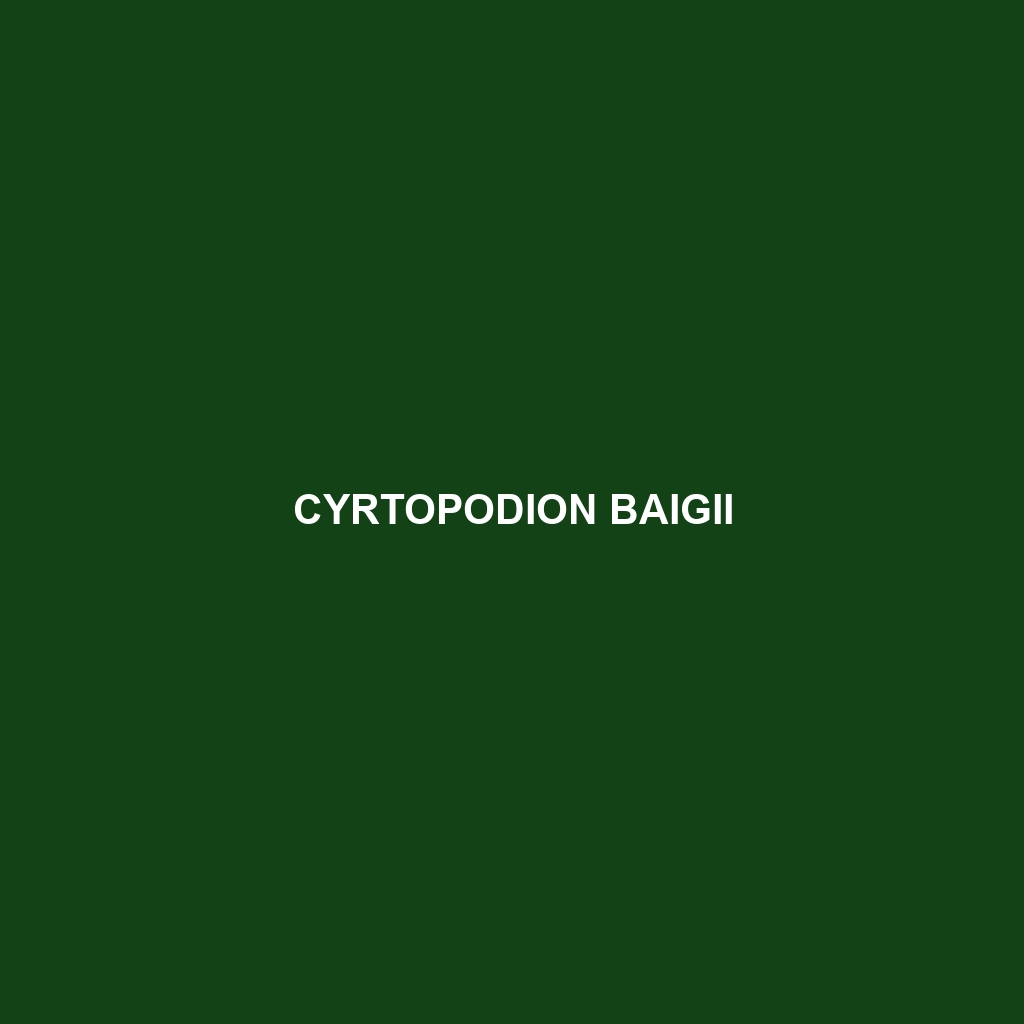Cyrtopodion baigii: Species Overview
Common Name: Cyrtopodion baigii
Scientific Name: Cyrtopodion baigii
Habitat: Cyrtopodion baigii is primarily found in the arid and semi-arid regions of Central and South Asia, particularly within the countries of Pakistan, Afghanistan, and parts of Iran. This species thrives in rocky habitats, extending to desert environments, where it can often be spotted on rocky outcrops and in areas with sparse vegetation. The species prefers habitats that provide ample shelter, allowing it to evade predators and regulate its body temperature.
Physical Characteristics: Cyrtopodion baigii is a medium-sized gecko, typically measuring between 8 to 12 cm in length. The coloration of this species is predominantly a blend of sandy browns and grays, which provides effective camouflage against the rocky surfaces of its habitat. Notable features include a flattened body shape and large, expressive eyes, adapted for nocturnal activity. One distinctive characteristic of Cyrtopodion baigii is its broad-headed profile, which aids in its foraging and mating activities.
Behavior: This gecko exhibits primarily nocturnal behavior, becoming active during the cooler hours of the night. Cyrtopodion baigii is known for its agile movement and quick reflexes, which are essential for hunting and evading threats. The species is also recognized for its social interactions, particularly during the breeding season, where males can often be seen engaging in courtship displays. Additionally, these geckos demonstrate territorial behavior, marking their territories through various physical displays.
Diet: Cyrtopodion baigii has an insectivorous diet, primarily feeding on a variety of small invertebrates, including crickets, moths, and beetles. Their feeding habits are adapted for nocturnal hunting, utilizing their keen eyesight to locate prey in low-light conditions. This species also plays a role in controlling insect populations, contributing to the ecological balance of its habitat.
Reproduction: The reproductive habits of Cyrtopodion baigii typically exhibit seasonal patterns, with breeding occurring in late spring to early summer. Females lay clutches of eggs, usually consisting of 2 to 4 eggs, in hidden locations among rocks or underground. Hatchlings emerge after an incubation period of about 30 days, displaying a miniature version of the adult’s coloration and patterns.
Conservation Status: Currently, Cyrtopodion baigii is classified as vulnerable due to habitat loss and degradation from human activities such as urban development and agricultural expansion. Conservation efforts are essential to preserve this unique species and its natural habitat, ensuring that it remains a vital part of the ecosystem.
Interesting Facts: Cyrtopodion baigii is often referred to as the “Baig’s Wall Gecko”. Its capability to adapt to harsh desert conditions is remarkable, showcasing its evolutionary resilience. Additionally, these geckos possess the ability to detach their tails when threatened, a defense mechanism that allows them to escape from predators.
Role in Ecosystem: As both predator and prey, Cyrtopodion baigii plays a critical role in its ecosystem. By feeding on insects, it helps maintain the balance of insect populations, while also serving as a food source for larger predators. Its presence indicates a healthy, functioning ecosystem, underscoring the importance of conserving its habitat.
